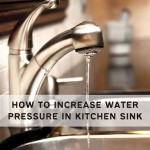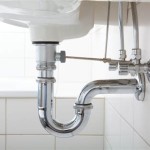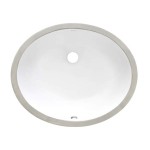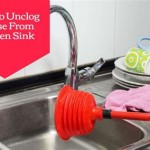```html
Electric Under Sink Water Heater: A Comprehensive Overview
Electric under sink water heaters, also known as point-of-use (POU) water heaters, are compact appliances designed to provide hot water directly at the faucet. Unlike traditional central water heaters that heat water for the entire building and distribute it through a network of pipes, these units are installed locally, typically under a sink or near the point where hot water is needed. This localized approach offers several advantages in specific applications, primarily focused on efficiency, convenience, and cost savings.
The functionality of an electric under sink water heater is relatively simple. Cold water enters the unit through a dedicated water line. Inside the tank, an electric heating element, controlled by a thermostat, warms the water to the desired temperature. Once the faucet is opened, the heated water is immediately available. The thermostat maintains the water temperature within a pre-set range, ensuring that hot water is readily accessible when needed. These units are available in various tank sizes, ranging from a few gallons to larger capacities, allowing users to choose the appropriate volume based on their specific hot water demands.
The primary purpose of an under sink water heater is to provide hot water rapidly without the delay associated with waiting for water to travel from a central water heater. This is particularly beneficial in situations where hot water is only needed intermittently or in small quantities, such as hand washing, dishwashing in a single sink, or for office kitchens. By eliminating the need to run water for an extended period to clear the cold water from the pipes, these heaters conserve both water and energy.
Advantages of Electric Under Sink Water Heaters
Electric under sink water heaters offer a range of benefits that make them a compelling option for specific applications. These advantages stem from their localized design and on-demand heating capabilities. One of the most significant advantages is water and energy conservation. By heating water only at the point of use, these heaters minimize the amount of water wasted while waiting for hot water to arrive from a central system. This also reduces the energy required to heat and maintain the temperature of water that might otherwise sit unused in the pipes.
Another key benefit is the reduction of standby heat loss. Central water heaters, even with insulation, lose heat to the surrounding environment as the heated water sits in the tank and distribution pipes. This standby heat loss contributes to energy waste. Under sink water heaters, by virtue of their smaller tank size and proximity to the point of use, minimize this loss. They only heat water when it is needed, and the short distance the hot water travels reduces heat dissipation.
Furthermore, installation of an under sink water heater is typically simpler and less expensive than installing or modifying a central water heating system. These units are designed for easy integration into existing plumbing infrastructure. They often require only a cold-water supply line and an electrical outlet. This ease of installation makes them suitable for retrofitting into existing homes or businesses, as well as for new construction projects where localized hot water is preferred.
Factors to Consider When Choosing an Electric Under Sink Water Heater
Selecting the appropriate electric under sink water heater involves considering several factors to ensure it meets the specific needs of the application. The first consideration is the tank size. The required tank size depends on the anticipated hot water demand. For infrequent use, such as hand washing in a powder room, a smaller tank (e.g., 2.5 gallons) may suffice. For applications with higher demand, such as a kitchen sink used for dishwashing, a larger tank (e.g., 4-7 gallons) may be necessary. Overestimating the tank size can lead to unnecessary energy consumption, while underestimating it can result in insufficient hot water availability.
The voltage and wattage of the heater are also crucial considerations. Most under sink water heaters operate on standard 120V or 240V electrical circuits. The wattage determines the heating power of the element and, consequently, the speed at which the water is heated. Higher wattage units heat water more quickly but require more electrical power. It is essential to ensure that the existing electrical circuit is capable of handling the heater's power requirements to avoid overloading the circuit and creating a safety hazard. Checking the circuit breaker amperage and the wire gauge is important.
The recovery rate, which refers to the time it takes for the heater to reheat the water after it has been depleted, is another important specification. A faster recovery rate ensures that hot water is quickly replenished after usage. The recovery rate is influenced by the wattage of the heating element and the tank size. Applications with frequent hot water demands benefit from a heater with a higher recovery rate. This ensures that a continuous supply of hot water is available without significant delays.
Installation and Maintenance
The installation of an electric under sink water heater is generally straightforward, but it is essential to follow the manufacturer's instructions carefully. Before starting the installation process, it is imperative to turn off both the water supply and the electrical power to the area. The heater should be mounted securely under the sink or in a nearby location, ensuring that it is level and stable. The cold-water supply line should be connected to the inlet fitting on the heater, and the hot water outlet should be connected to the faucet.
Electrical connections must be made according to local electrical codes. Ensure that the heater is properly grounded to prevent electrical shocks. If the heater requires a dedicated circuit, it is advisable to have a qualified electrician install one. After making all connections, slowly turn on the water supply and check for any leaks. Bleed the air from the tank by opening the hot water faucet until a steady stream of water flows. Finally, turn on the electrical power to the heater.
Regular maintenance is crucial for prolonging the life of the electric under sink water heater and ensuring its efficient operation. One of the most important maintenance tasks is to periodically flush the tank to remove sediment buildup. Sediment can accumulate over time and reduce the heater's efficiency and lifespan. The frequency of flushing depends on the water quality in the area but is generally recommended at least once a year. To flush the tank, turn off the power and water supply, connect a hose to the drain valve at the bottom of the tank, and open the valve to drain the water. Rinse the tank thoroughly until the water runs clear.
Another maintenance task is to inspect the heating element periodically for signs of corrosion or damage. If the element is corroded or damaged, it should be replaced by a qualified technician. The thermostat should also be checked to ensure that it is functioning correctly and maintaining the desired water temperature. These maintenance practices will help ensure that the electric under sink water heater operates efficiently and reliably for many years.
In addition to regular flushing and inspection, it’s advisable to check the temperature and pressure relief valve (TPR valve) periodically to ensure it is functioning correctly. This valve is designed to release pressure if it exceeds a safe level, preventing potential tank damage. To test the valve, carefully lift the lever and allow a small amount of water to discharge. If the valve doesn’t seat properly afterward or continues to leak, it should be replaced. Replacement of the TPR valve is a quick, inexpensive service that greatly increases the safety of the unit.
Understanding the features, advantages, and practical considerations related to electric under sink water heaters is essential for making informed decisions about their use. Proper selection, installation, and maintenance are fundamental for maximizing their efficiency, longevity, and overall value. By carefully evaluating these aspects, individuals and businesses can effectively leverage the benefits of these localized water heating solutions.
```
Electric Water Heater 110v 3000w Instant Hot Under Sink For Kitchen

Fogatti Electric Mini Tank Water Heater 2 5 Gallon Point Of Use For Instant Hot 1440w 120v Shelf Under Sink Fdes Et25g At Com

1 5kw Electric Mini Tank Water Heater For Rv Trailer Kitchen Under Sink Counter

Gpeh Electric Water Heater 110v 3000w Instant Hot Under Sink For Kitchen Black

Bosch Tronic 3000t 2 7 Gal Electric Water Heater

Bosch Tronic 3000 Us12 Electric Point Of Use Tankless Water Heater 7736500683 The Home

3000w Mini Electric Tankless Instant Water Heater Under Sink For Kitchen Bathroom Hot B40144

1 5kw Electric Mini Tank Water Heater For Rv Trailer Kitchen Under Sink Counter

Ge Appliances 14 6 Kw 240v Tankless Under Sink Point Of Use Electric Water Heater Indoor

120v Undersink Electric Tankless Water Heater Watts 20 Amps Heaters Grainger







